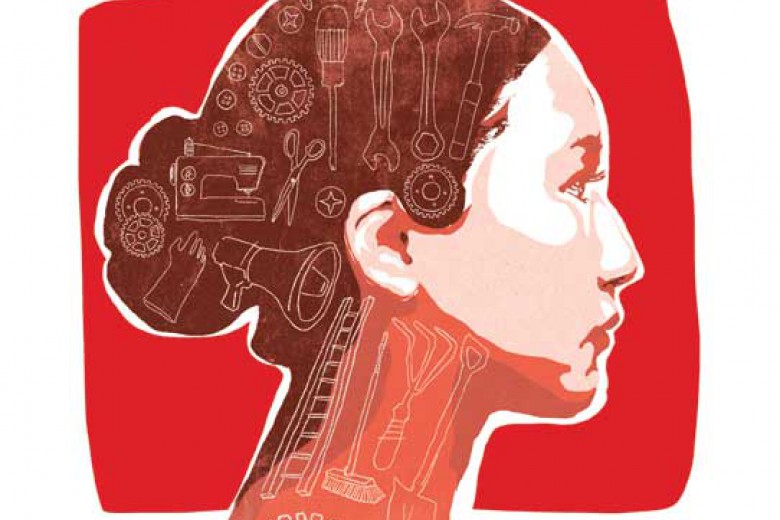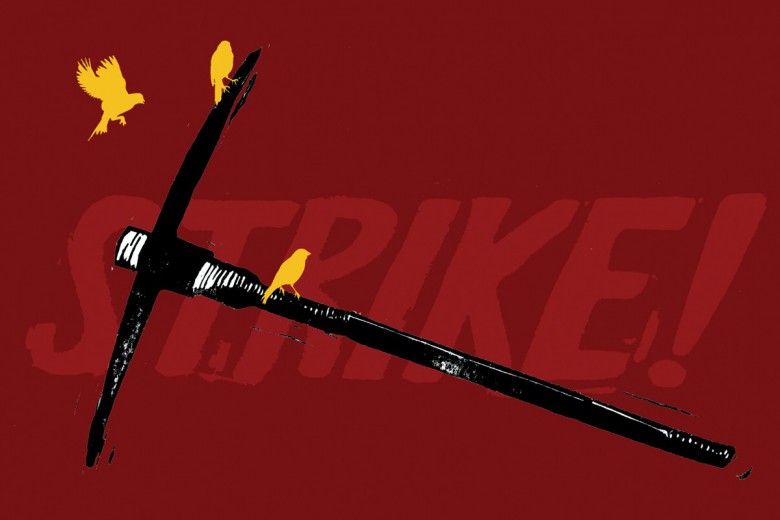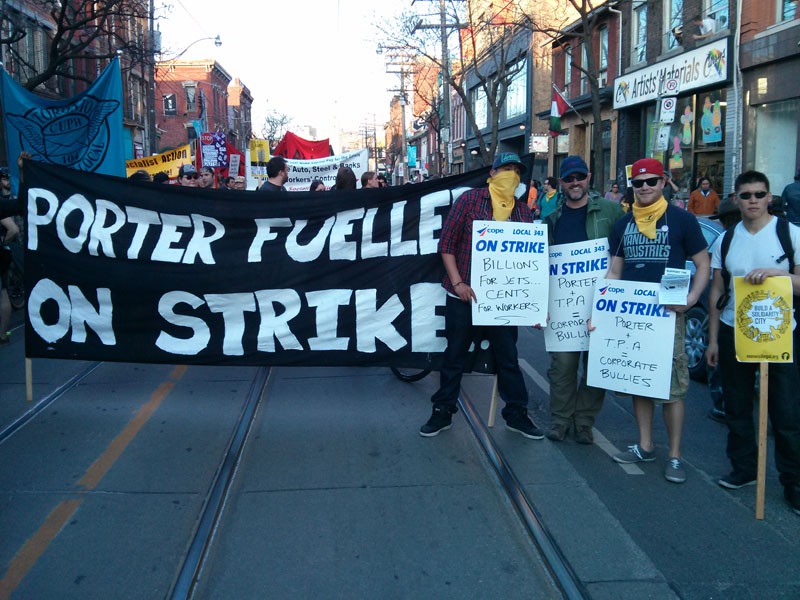
On December 23rd, I boarded a Halifax-bound Porter flight at the Billy Bishop airport in Toronto, unaware that the day before Porter’s airplane fuelers had voted unanimously in favour of striking. When I returned to Toronto two weeks later, I began a months’ long involvement in picket-line actions in solidarity with the fuelers. The strike played a galvanizing role amongst labour activists in Toronto and reset the tone of the struggle after a series of recent labour losses. With the one-year anniversary of the Porter strike approaching, it’s appropriate to reflect on the process of how a small group of workers captured the attention of the broader labour movement.
From Grievance to Strike
The fuelers’ strike was the culmination of months of grievance. Low wages and high rates of employee turnover made the fuelers’ working conditions untenable. According to one fueler, their teams had chronic problems keeping employees because of the comparatively low wages they were paid – about $12 an hour, compared to the $16 to $18 per hour paid at Pearson. This resulted in insufficient staffing, which contributed to unsafe working conditions. For example, before the strike, an employee was ordered to fuel a private plane alone. He had to climb up the side of the plane with the hose on his back and, as he attempted this, he fell onto the tarmac and broke both his wrists.
The employees raised their concerns by writing a letter to their manager. They were given a meeting with Paul Moreira, Vice President of Airport Operations and Customer Service, who promised that he “would do a million things to make us happy.” Moreira disputed the workers’ claim that turnover was so high, but he promised to improve work conditions. Another fueler said, “he promised better staffing, new rain gear and stuff like that. He used his car salesmen technique to make us feel at ease.” The meeting didn’t produce any tangible results, and so over the course of the next month several fuelers approached their co-workers with union cards for the Canadian Office and Professional Employees’ Union (COPE). Not long after, the fuelers at Billy Bishop Airport became COPE Local 343 and began negotiating their first contract.
Porter, flying refined?
Porter FBO launched in 2006 with the promise to bring “dignity and refinement back to flying.” The small airline is based out of Toronto’s Billy Bishop Airport on Toronto Island, a stone’s throw away from the downtown core. The airline’s focus on affordable flights in the eastern triangle – Toronto, Ottawa, and Montreal – has carved out a niche in the commuting class.
Before Porter came on the scene, the Billy Bishop Airport was used primarily by private planes. In 2002, a multimillion dollar plan was announced to reinvigorate the island port, spearheaded by Robert Deluce, Porter’s CEO. The Toronto Port Authority (TPA), which manages the Billy Bishop Airport, granted Porter a large number of flights per week and in 2005 Porter bought the terminal outright.
Strike!
After months of stalled negotiations, the fuelers’ strike began quietly in January 2013. Porter service was uninterrupted because the striking workers were immediately replaced with scabs, leaving the COPE workers with few tactics on hand to pressure the airline into negotiating with them. According to one worker they were “mainly marching on the sidewalk and blocking taxi traffic in the parking lot adjacent to the ferry terminal.”
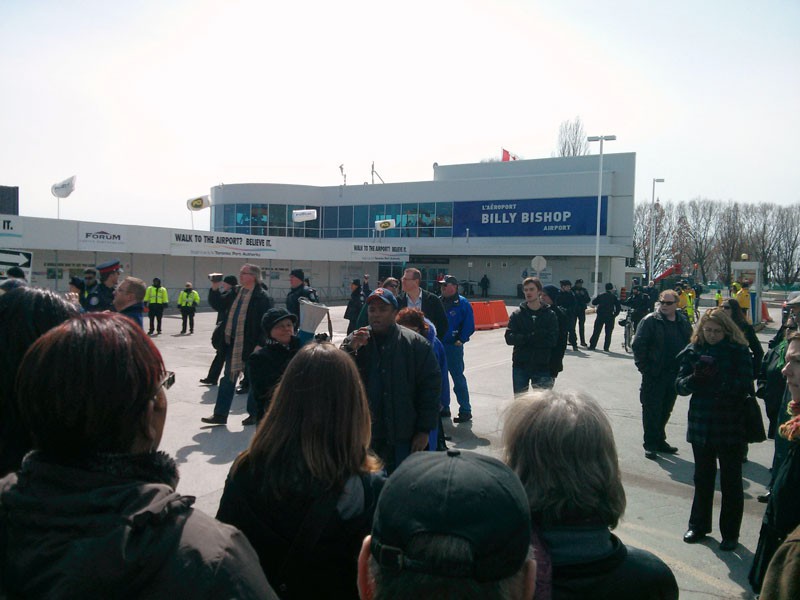
Shortly after the strike began, a coalition of Ontario trade union activists, including many workers from Pearson International Airport, called for picket-line support for the Porter fuelers. I became involved with the strike when my fellow members of the Industrial Workers of the World (IWW), also known as Wobblies, and members of Common Cause, an Ontario anarchist organization, coordinated picket-line support with the COPE workers for an early morning action on January 18th.
At 4:30 AM, we parked our van in an underground lot and met with the fuelers. All of the workers were dressed sensibly for -14○ Celsius, while I wore a thin pea coat and gloves alongside another Wobbly who wore only a hoodie. “Next time, strike in the summer,” one of us joked. We walked as a group up into the open-air parking lot used by airport employees and set up a line in the driveway. Few cars arrived that early, leaving long stretches of time when we simply walked in a circle to stay warm.
When a vehicle drove up, a fueler would start the clock, and we would all shuffle around in front of the car for the next three to five minutes and then we’d allow them to pass. Then we’d restart the clock for the next car. Get there first and you’d wait five minutes, but get there right behind two other cars and you’d wait at least fifteen minutes.
Our pickets with the COPE workers were an education in effective strike tactics. Through trial-and-error our coalition transformed the pickets from their original form into a viable means of disrupting the airline’s business.
More People, More Pickets
Utilizing our size was an important factor in success. There were approximately 22 fuelers on strike, but together with their allies, there were often 25 or 30 bodies on the picket. This allowed for more expansive demonstrations. Several times, we operated three simultaneous lines at key parking lots used by staff. We also became more resolute in how long to hold a single car. The line-ups became longer and the motorists became angrier. I remember an SUV swerving into a line stopping only after it ran over the toes of a worker, smartly wearing steel-toed boots, and just before it would’ve hit me. Yet, even as our militancy grew, the sidewalk pickets were still very porous; passengers and staff could pass through with very little effort.
“This is what a picket-line looks like!”
On January 22nd, the Ontario Liberal party held a convention to select a new leader and an interim premier to replace Dalton McGuinty. Still stinging from the government’s move to force a regressive agreement on the Ontario teachers’ unions, provincial labour organizations called for protests. The IWW planned to bring protestors from the Liberal convention to the picket line at Billy Bishop. Around 50 of us arrived at the airport like a haphazard cavalry on a distinctive pink CUPE bus. It dropped us off and we began the familiar picket in the parking lot adjacent to the terminal. It was a slow start. Then, the picket support cut out across the single road into the terminal Eireann Quay. Traffic became clogged, shuttle buses and taxis couldn’t reach the terminal, and so passengers started walking past the line with luggage in hand. We passed out fliers about the strike. Reactions ranged from anger to genuine concern.
Blocking Eireann Quay was more disruptive than picketing parking lots, but unlike the sidewalk pickets the cops were entitled to intervene. The workers and the IWW attempted a road picket again, this time in the evening with no additional support, only to be shuffled off the road after ten minutes.
Hit them where it hurts
As the airport was practically inaccessible for actions, we shifted our focus and decided to block the ferry that transports passengers and staff to Billy Bishop airport from the mainland. The first occupation was staged early on a rainy February morning. A group of about 40 fuelers, IWW members, and allies met down the road from the terminal. After briefing everyone on the plan, we made our way towards the ferry terminal. As the ferry docked on the Toronto side, we snapped into action, afraid to miss the narrow window of opportunity.
A handful of us went directly on to the ramp connecting the ferry to the dock, where TPA workers shouted at us to stop. The remaining picketers – including all of the COPE 343 workers – formed a line at the driveway into the ferry. We were silent in the beginning. Those of us on the ramp cautiously kept watch around us in case police or security approached from behind. As our worry faded, we became more conscious of what we were doing. The air was electric, and we talked easily amongst ourselves. “This is a good ol’ fashion picket-line,” a Wobbly piped up.
Thirty minutes later, the police had called in enough officers to intervene. We decided to end the action and we departed through the adjacent park. An hour later, we sat in a diner checking our phones for any flight cancellations. We counted eight in total, but considering the rain it didn’t feel like a clear win.
We decided to block the ferry again, this time on a Sunday evening. To our surprise we disrupted the ferry service for over 75 minutes before the police came en masse. We walked away chanting “Sol- Sol- Sol- Solidarity!” Later, at a pub, we checked the flight status webpage: all flights were delayed and several were cancelled. We burst into a cheer. This was the first time that any of us had ever had experienced such palpable working class power.
Workers United!
With the success of the ferry occupations, the larger labour movement started to take notice of the COPE strike. The Ontario Federation of Labour held a snap rally of several hundred people on Eireann Quay the day after our second occupation, gumming up traffic in the terminal. Members of CUPE 3903, which represents York University contract faculty, teaching, and research assistants, picketed the Esso fuel depot – Porter’s Supplier – delaying trucks for several hours. Funding started to flow in from other unions. The strike coordinators encouraged fuelers to provide picket-support for other striking workers – including members of the Ontario Public Service Employees’ Union. The OPSEU workers repaid the favour by coming to the picket lines at Porter.
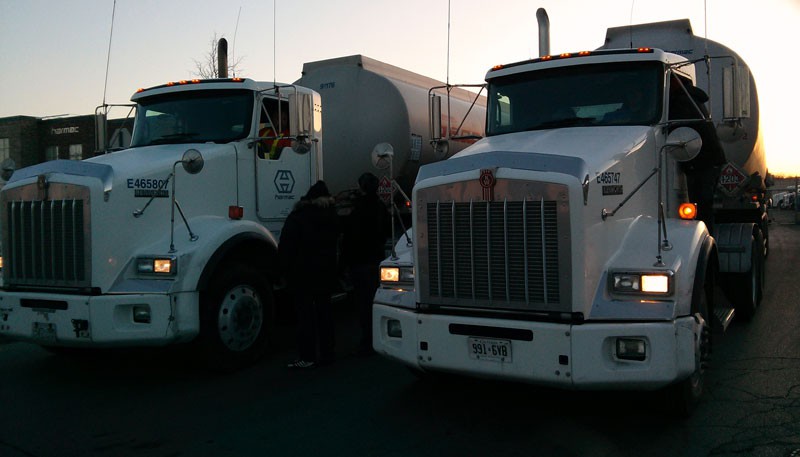
All this exposure put them front and centre in Toronto. COPE members were invited to speak at labour conventions, and other unions donated funds to the local. Most notably, the Catholic School Teachers’ Union, bitter from their own failed bargaining, donated $30,000. These funds were vital for sustaining the strike.
Losing Momentum
The momentum we built in March started to fade when the TPA issued an injunction against COPE 343. Its terms specified that only three striking workers could hand out fliers by the ferry terminal at a time; demonstrations were restricted to the sidewalk along Eireann Quay; and any disruptive noise was prohibited. We attempted a third ferry occupation just before the injunction went into effect. It lasted only 35 minutes before an ambulance arrived requiring access to the airport. We let it board the ferry without delay and the action ended.
The injunction succeeded in curbing militant action, making it useless and unsafe to continue with the ferry actions. Furthermore, Porter had just filed a four million dollar libel case against COPE for tweeting a link to a short video that suggested planes were in danger of crashing because the planes were being fueled by inadequately trained scab labour. The union felt pressured into reining in the fuelers, making it clear they shouldn’t participate in any actions that would violate the injunction, and that they should stay clear of the IWW.
New Targets, Last Chance
Although the COPE 343 members and the IWW remained united, maintaining the pressure of the strike was difficult. Luckily, a new angle opened up. On April 10th, Robert Deluce, the Porter CEO, announced a bid to extend the Billy Bishop runway by 150 meters to allow larger planes capable of long-haul routes to use the airport. Under the tripartite agreement between the City of Toronto, TPA, and Transit Canada, City Hall had to be on board and so Porter began the process of lobbying and building public support. The COPE workers seized the opportunity by bringing their case to each of Deluce’s promotional events.
When Deluce travelled to Hamilton to give a speech on the runway expansion, the workers followed and picketed his arrival, impeding attendees from entering the building. When he went to Ottawa for a speaking engagement, a group of supporters did the same. This time they made it inside the building and heckled Deluce while security guards and police officers stood in their way. When Deluce appeared at Toronto City Hall to pitch the expansion, workers were there again to shout him down.
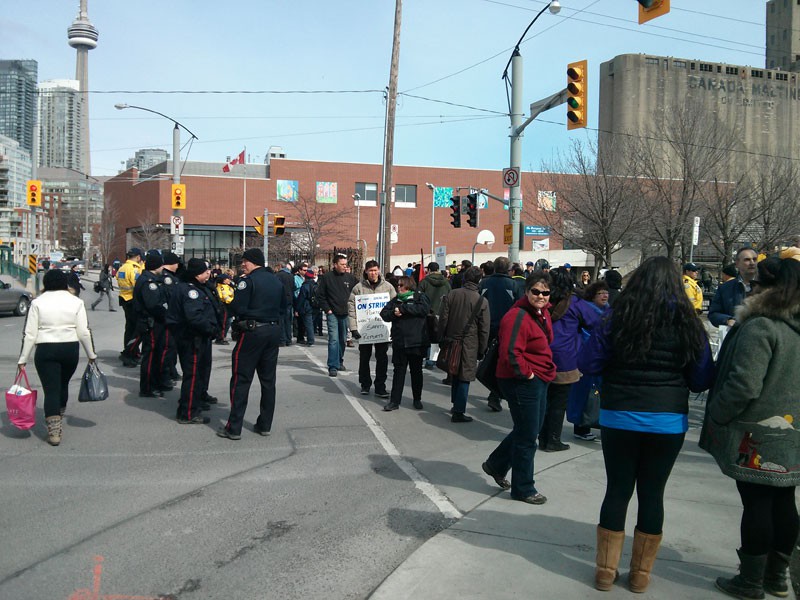
Early in the expansion bid, Porter FBO went back to the bargaining table with COPE. Finally, they were ready to bargain. A settlement was reached in late June, and the workers won new concessions from the employer including scheduling and lump-sum payments, and a wage increase of 25 cents for all employees with a promise to revisit wages in the future.
After the Strike, the Iron’s Still Hot
Media coverage usually begins with the strike vote – if we’re lucky – and ends with the employees returning to work, but a work stoppage is only one scene in a larger act. Porter’s fuelers were probably not greeted with applause from their coworkers when they went back on the job. Their demands weren’t completely met and the next round of bargaining will bring up its own challenges. Organizing in workplaces is an ongoing struggle, where obstacles can seem insurmountable. Yet the Porter strike, along with recent actions by fast food workers, demonstrates that there is a growing recognition that militancy is essential if workers are to gain leverage in labour disputes.
The strike at Porter also shows the strength of solidarity. By solidarity I mean the deep, sustained bonds that come from working closely with people. In the beginning the fuelers were unsure of who the IWW members were, what our aims were. They came around when we showed up for events and collaborated on actions. The trust we built early on was vital for actions such as the ferry occupations.
These deeper bonds can make all the difference in how tolerable and successful a strike is for the workers, and such ties don’t have to vanish after a strike ends. When I asked one worker to summarize his thoughts on the strike after it had finished, he said, “It was more fun than my job.”




